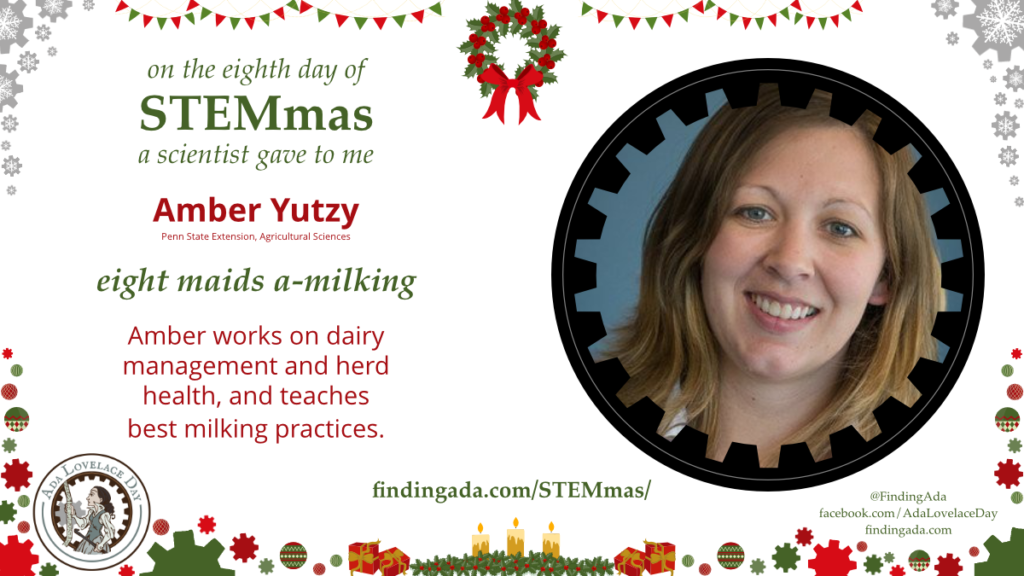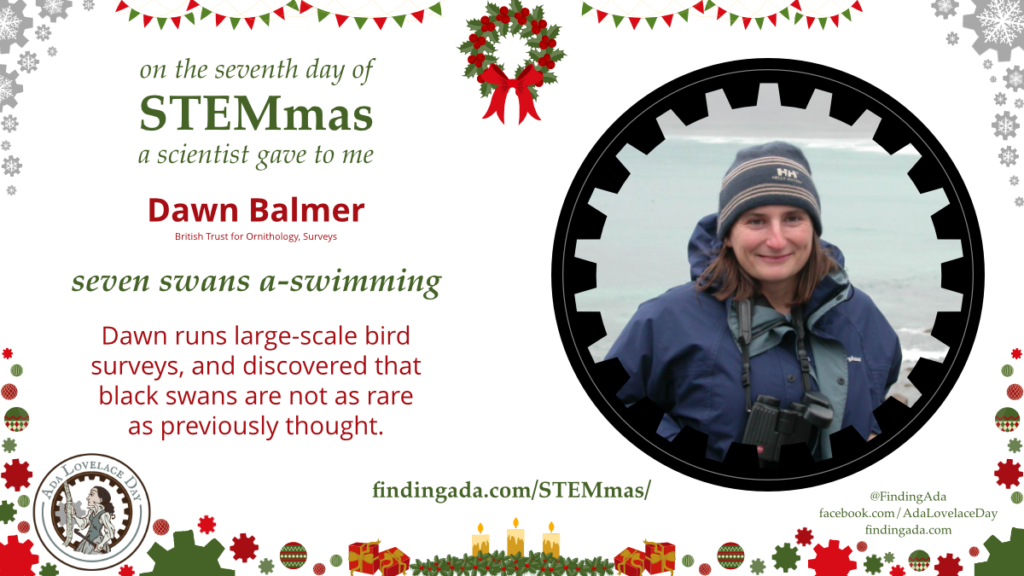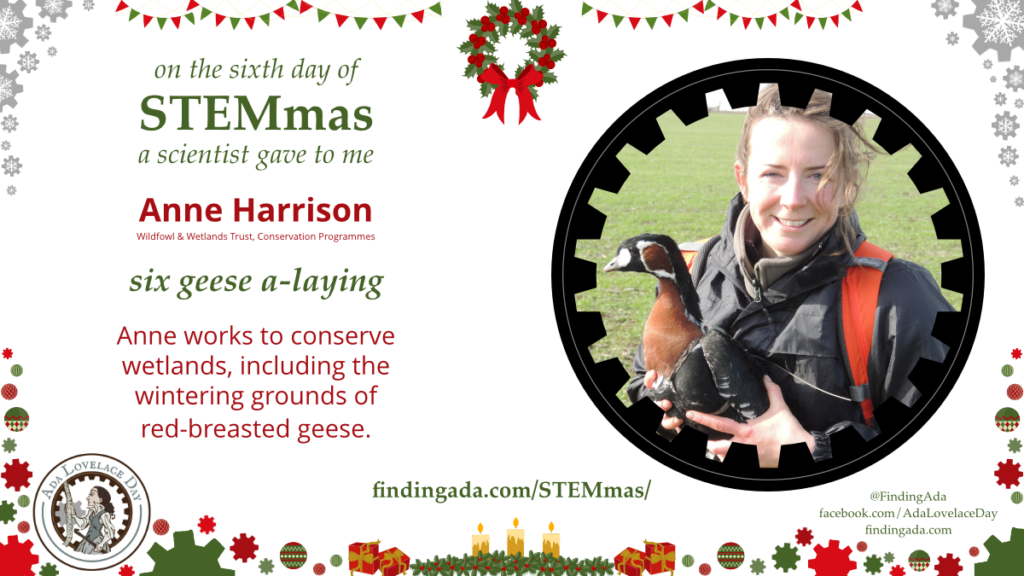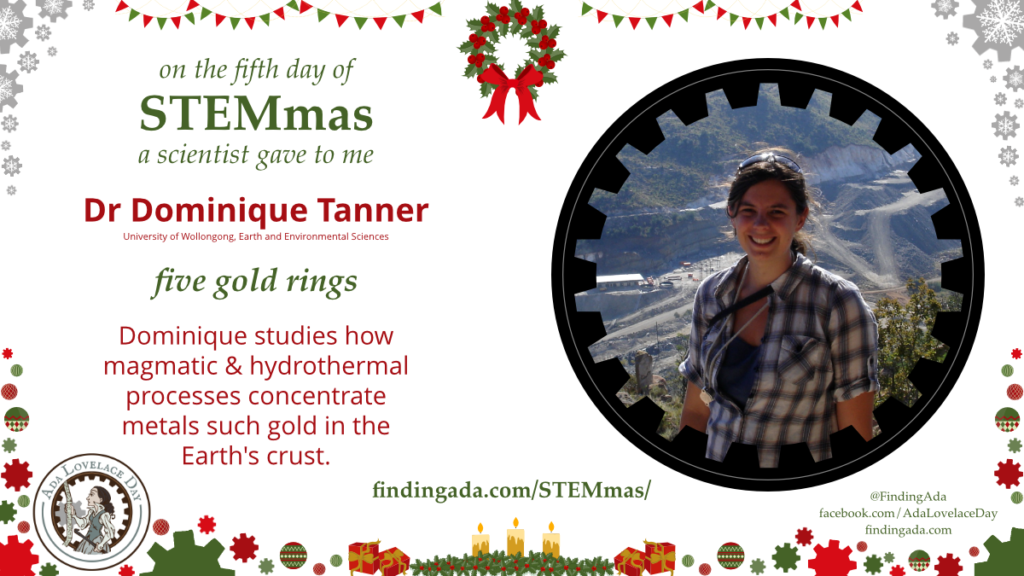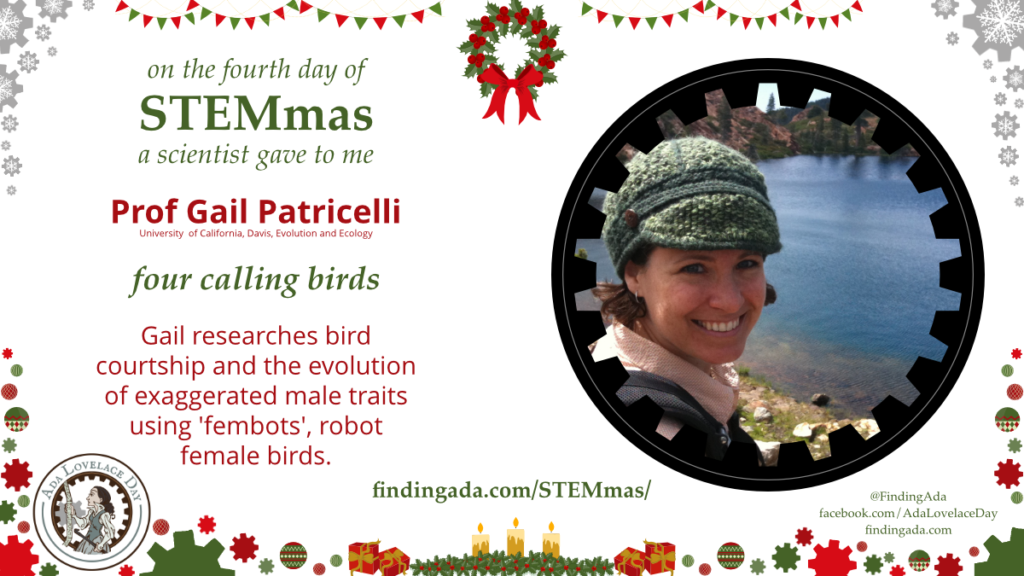Our eighth awesome woman in STEM is Amber Yutzy, a dairy educator who teaches best milking practices.
Amber’s work focuses on “improving dairy management techniques to help make dairy producers more profitable and productive. She is interested in herd health, reproductive efficiency, and milk quality/udder health.” In 2014, she led a workshop “featuring tools for evaluating milk quality” and best milking practices at the Women in Dairy Conference.
